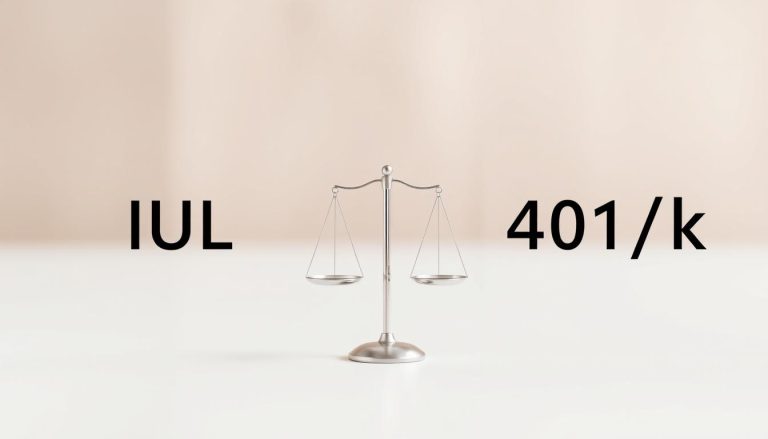Gold IRA Investment Guide 2025: Securing Your Retirement with Precious Metals
Gold IRA Investment For Retirement
Today, when opting for a Gold IRA investment for retirement, savvy investors are increasingly turning to alternative retirement vehicles that offer stability and growth potential. Gold IRAs have emerged as a powerful solution for those looking to diversify beyond traditional paper assets and protect their retirement savings against market volatility, inflation, and currency devaluation. This comprehensive guide explores everything you need to know about Gold IRAs in 2025, from basic concepts to advanced strategies.
1. Understanding Gold IRA Investments: The Foundation of Financial Security
A Gold IRA (Individual Retirement Account) allows you to hold physical precious metals in a tax-advantaged retirement account. Unlike conventional IRAs invested in stocks, bonds, and mutual funds, a Gold IRA gives you direct ownership of tangible assets – specifically, IRS-approved gold bullion and coins.
Why Gold IRAs Matter in 2025
The global economic outlook for 2025 presents several challenges for retirement investors:
- Persistent inflation concerns despite central bank interventions
- Unpredictable market volatility following recent economic shifts
- Growing national debt levels across major economies
- Geopolitical tensions affecting traditional investment markets
Gold IRAs address these concerns by incorporating an asset with a proven track record of maintaining value during economic turbulence. According to recent market analysis, gold has maintained an average annual return of approximately 11% over the past five years, outperforming many traditional investment vehicles during periods of market stress.
Eligibility and Contribution Limits
To qualify for a Gold IRA, you must:
- Be at least 18 years old with a valid Social Security number
- Have earned income from employment or self-employment
- Stay within annual contribution limits ($7,000 for 2025, with an additional $1,000 for those 50+)
Most investors fund their Gold IRAs through rollovers or transfers from existing retirement accounts rather than making direct contributions.
2. Retirement Portfolio Protection: How Gold Safeguards Your Future
Traditional retirement accounts face several challenges that can erode your savings over time:
Inflation Protection
Inflation steadily reduces purchasing power – what costs $100 today might require $150 in a decade. Unlike paper currency, gold has historically maintained and often increased its value during inflationary periods. This makes it an effective hedge against the erosion of your retirement savings.
Market Volatility Defense
Stock market corrections and crashes can devastate retirement portfolios, especially for those approaching retirement age. Gold typically has low correlation with stock markets, often moving in the opposite direction during market downturns. For example, during major market corrections over the past decade, gold has frequently appreciated while traditional investments declined.
Currency Devaluation Shield
Government monetary policies can weaken the dollar’s value, affecting retirement savings denominated in currency. Gold, as a globally recognized store of value, protects against currency devaluation. This is particularly relevant in 2025 as central banks continue expansionary monetary policies.
3. Physical Gold Ownership: The Tangible Advantage

Physical ownership of gold through a Gold IRA offers distinct advantages compared to paper assets or gold derivatives:
Elimination of Counterparty Risk
When you own physical gold, there’s no intermediary whose failure could jeopardize your investment. Unlike gold ETFs, mining stocks, or gold certificates, physical gold in a Gold IRA isn’t dependent on any financial institution’s solvency.
Protection from Financial System Vulnerabilities
Physical gold ownership safeguards your retirement assets from financial system failures, banking crises, or electronic record disruptions. Your tangible assets remain secure regardless of market conditions or financial institution stability.
Real Asset Control
With a Gold IRA, you maintain control over a real asset with intrinsic value. Unlike digital or paper investments, your precious metals exist as physical entities stored in secure facilities on your behalf, available for inspection or delivery upon retirement.
4. Precious Metals Investment Strategy: Optimizing Your Gold IRA
Developing a strategic approach to your Gold IRA can maximize its benefits for your retirement plan:
IRS-Approved Gold Products
Not all gold products qualify for inclusion in a Gold IRA. The IRS requires:
- Minimum purity of 99.5% (24 karats) for gold bullion
- Products from accredited refiners, assayers, or national mints
- Bullion coins like American Gold Eagles, Canadian Maple Leafs, and Australian Kangaroos
- Standard-sized gold bars from reputable manufacturers
Collectible or rare coins typically don’t qualify for Gold IRAs due to their subjective valuation factors.
Allocation Strategies
Financial advisors often recommend allocating 5-15% of your retirement portfolio to precious metals, depending on your:
- Age and retirement timeline
- Risk tolerance
- Overall financial situation
- Economic outlook
This allocation provides meaningful protection without overexposure to a single asset class.
Timing Considerations
While gold serves primarily as a long-term wealth preservation tool rather than a short-term trading vehicle, market conditions can affect optimal entry points. Consider:
- Dollar-cost averaging into gold positions rather than making single large purchases
- Reviewing your allocation annually as market conditions evolve
- Adjusting your precious metals mix based on changing economic indicators
5. Gold IRA Setup Process: Your Path to Secure Retirement
Establishing a Gold IRA involves several key steps:
Selecting a Reputable Custodian
Choose a specialized Gold IRA custodian with:
- Extensive experience in precious metals IRAs
- Transparent fee structures
- Strong customer service reputation
- Secure storage solutions
- Clear buyback policies
Leading Gold IRA custodians in 2025 maintain relationships with trusted depositories and metals dealers to ensure seamless transactions.
Funding Your Account
Most investors fund Gold IRAs through:
- Direct Transfer: Moving funds directly between custodians without taking possession
- Rollover: Withdrawing funds from an existing retirement account and depositing them into your Gold IRA within 60 days
The transfer method typically avoids potential tax complications and allows unlimited transactions annually, while rollovers are limited to one per 12-month period.
Selecting and Purchasing Metals
Work with your custodian to select appropriate precious metals from approved dealers. Consider:
- Current market prices and premiums
- Product availability
- Storage requirements
- Long-term investment goals
Secure Storage Solutions
IRS regulations require that Gold IRA assets be stored in approved depositories. Options include:
- Segregated storage (your metals stored separately)
- Allocated storage (your specific metals identified but stored with others)
- Unallocated storage (ownership of a portion of communal metals)
Most investors prefer segregated or allocated storage for maximum security and peace of mind.
Frequently Asked Questions About Gold IRAs in 2025
1. How does a Gold IRA differ from traditional retirement accounts?
A Gold IRA allows you to hold physical precious metals rather than paper assets like stocks and bonds. This provides tangible asset ownership with different risk profiles and growth potential. While traditional IRAs expose you primarily to market performance, Gold IRAs connect your retirement savings to the intrinsic value of precious metals, offering protection against financial system uncertainties.
2. What are the tax implications of a Gold IRA?
Gold IRAs offer the same tax advantages as conventional IRAs. Traditional Gold IRAs provide tax-deductible contributions and tax-deferred growth, with taxes paid upon withdrawal. Roth Gold IRAs use after-tax contributions but offer tax-free growth and qualified withdrawals. Early withdrawals before age 59½ typically incur a 10% penalty in addition to applicable taxes.
3. How do I take distributions from my Gold IRA during retirement?
When taking distributions, you have three primary options: receive physical delivery of your metals (triggering a taxable event), have the custodian sell the metals and distribute cash, or transfer the metals to another qualified account. Required Minimum Distributions (RMDs) still apply to Traditional Gold IRAs beginning at age 73 (as of 2025 regulations).
4. What fees are associated with Gold IRAs in 2025?
Gold IRAs typically involve several fee categories: setup fees ($50-$300), annual administrative fees ($75-$300), storage fees (0.5-1% of assets annually), transaction fees for purchases/sales, and potential buyback fees when liquidating. While these fees exceed those of standard IRAs, they reflect the costs of physical asset management and secure storage.
5. Can I convert my existing 401(k) or IRA to a Gold IRA?
Yes, most qualified retirement plans—including 401(k)s, 403(b)s, TSPs, and traditional IRAs—can be rolled over into a Gold IRA. The process involves establishing a self-directed IRA with a qualified custodian, completing transfer paperwork, and selecting precious metals for purchase. This can typically be accomplished without tax penalties when done correctly.
Conclusion: Securing Your Financial Future with Gold IRAs
As economic uncertainties persist into 2025, a Gold IRA represents a strategic component of a well-diversified retirement plan. By incorporating physical precious metals into your portfolio, you gain protection against inflation, market volatility, and currency devaluation while maintaining the tax advantages of qualified retirement accounts.
The key benefits of Gold IRAs—tangible asset ownership, historical value preservation, and portfolio diversification—address many of the concerns facing today’s retirement investors. While not a complete replacement for traditional retirement vehicles, an adequately allocated Gold IRA can significantly enhance your financial security and provide peace of mind as you build toward retirement.
As with any investment decision, consult with qualified financial advisors to determine how a Gold IRA fits within your overall retirement strategy. By proactively diversifying your retirement holdings with precious metals, you position yourself for greater resilience against economic challenges and increased potential for long-term financial security.







